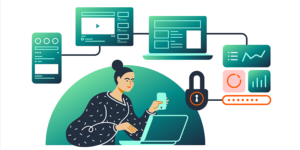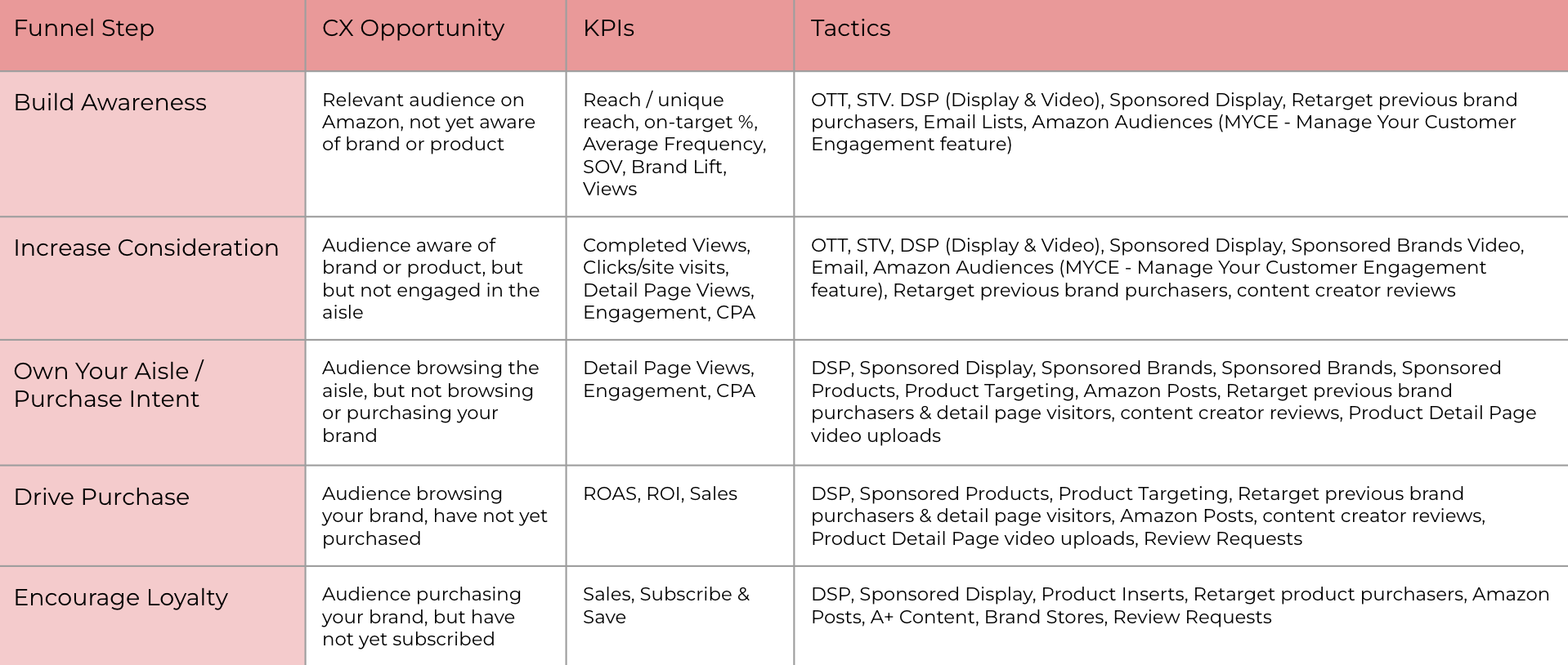
In the ever-evolving digital advertising landscape, staying ahead of the curve is essential for marketers seeking to optimize their strategies. Amazon’s Programmatic Advertising Demand-Side Platform (DSP) has emerged as a powerful tool in this arena, offering advertisers ingenious ways to reach their target audiences effectively.
Understanding Amazon DSP
Amazon DSP is a sophisticated platform that enables advertisers to programmatically purchase display and video ad placements across Amazon-owned and third-party websites. This platform leverages Amazon’s vast data and insights, allowing advertisers to deliver highly relevant and personalized ads to users at different stages of the purchase journey.
Why Use Amazon DSP for Advertising?
There are several compelling reasons to use the Amazon DSP for your advertising campaigns:
- Amazon-Exclusive Insights and Targeting: The Amazon DSP provides access to Amazon’s unparalleled consumer purchase data, allowing advertisers to target relevant audiences based on their shopping behavior and preferences. This enables advertisers to reach highly qualified audiences and deliver personalized ad experiences.
- Robust Reporting and Tracking: The Amazon DSP offers robust reporting capabilities, allowing advertisers to track the progress of their campaigns in real-time. With detailed insights into ad performance and audience engagement, advertisers can make data-driven decisions and optimize their campaigns for better results.
- Availability for All Advertisers: Whether you sell on Amazon or not, you can leverage the Amazon DSP for your advertising campaigns. This makes it a versatile platform that caters to a wide range of advertisers, from established brands to emerging businesses.
- Full-Funnel Advertising Capabilities: Unlike Amazon’s Sponsored Ads, which primarily target shoppers at the consideration and purchase stages of the customer journey, the Amazon DSP offers full-funnel advertising capabilities. This means advertisers can reach shoppers earlier in the purchase journey, driving brand awareness and consideration.

When to Consider Amazon DSP
Amazon DSP can be a valuable addition to your advertising toolkit in various scenarios:
- Advanced Targeting: Amazon DSP’s robust targeting options are a great fit if you’re looking to target specific audiences with precision.
- Product Launches: When launching new products, Amazon DSP can help you generate awareness and capture the attention of potential customers.
- Remarketing: Utilize Amazon DSP to re-engage users who have shown interest in your products but haven’t converted yet.
- Cross-Selling and Upselling: Promote related products to customers who previously purchased from you, maximizing lifetime value.
- Seasonal Campaigns: Amazon DSP can amplify your promotional efforts and drive sales during peak shopping seasons.

Getting Started with Amazon DSP
Setting Objectives: Define your advertising objectives clearly. Whether it’s driving brand awareness, increasing sales, or promoting specific products, having well-defined goals will guide your strategy.
Budget Allocation: Determine your budget allocation for Amazon DSP campaigns. Start with a budget that aligns with your objectives and gradually adjust based on campaign performance.
How Much Does Amazon DSP Cost?
The cost of using the Amazon DSP depends on various factors, including the country from which you’re using it, the service model you choose, and your advertising budget. You need to meet a minimum DSP ad spend threshold if you choose to use this service with Amazon or a different third-party provider. These prices range between $10,000 and $150,000 monthly, depending on whether the provider is Amazon or a third-party provider and whether it is a self-service or a directly managed service.
In addition to the minimum ad-spend requirements, self-service or managed-service providers may charge a minimum monthly fee. The fee can be a set amount or a percentage of your ad spend, depending on your advertising budget.
The self-service option allows you to implement and fine-tune your campaigns, while the managed-service option provides professional assistance in campaign strategy, execution, and optimization.
The Bellavix Team is happy to help your business grow and develop. We understand that each business is unique, and we provide access to the DSP platform on a custom-based budget, depending on the business type and its niche.
Amazon DSP Advertising Inventory
Before diving into the different Amazon DSP advertising inventory types, let’s clarify the terms “ad inventory” and “supply source.”
Ad inventory refers to the channels or platforms where you can display your ads. For example, Amazon-owned and operated mobile, desktop, and mobile app are different ad inventory types on the Amazon DSP.
On the other hand, a supply source refers to the specific exchanges or sites where your ads will be displayed. For instance, Amazon mobile app, Amazon mobile web, and Freevee mobile web are examples of supply sources within the Amazon-owned and operated mobile ad inventory.
Types of Amazon DSP Inventory
The Amazon DSP offers a range of inventory types to help advertisers reach their desired audiences. Here are the main inventory types available:
- Amazon Owned & Operated Mobile, Desktop, and Mobile App (Mobile AAP): This inventory includes exclusive ad placements on Amazon retail sites and other Amazon-owned properties like IMDb, Twitch
- Amazon Publisher Services: This inventory consists of ad placements on leading publishers’ sites, made available through Amazon Publisher Service’s header bidding integrations.
- Third-Party Exchanges (Open exchanges): This inventory includes ad placements on sites not owned or operated by Amazon. These placements are available through leading exchanges like Google Authorized Buyers.
When setting up your Amazon DSP campaigns, it’s recommended to use a mix of inventory types to achieve scale, diversify ad formats and content, and optimize your campaigns based on individual supply source performance.

Targeting Types on Amazon DSP
With Amazon DSP, thousands of targeting options support various advertising objectives. In particular, remarketing is a fantastic technique if your product is a long-term sale or is a significant investment. On the other hand, if you want to drive brand awareness, a video could be used to expand your brand’s presence outside Amazon by attracting new customers.
Audience Segmentation: Use Amazon’s audience segmentation tools to identify and target your ideal audience segments. Amazon DSP allows you to create custom audiences based on various factors like shopping behavior(contextual), custom-built(specific ASINs, brands, stores,etc.), demographics, interests, lifestyle, lookalike, and third-party audiences.
The Amazon DSP allows you to target all your customers, existing and potential. You can identify the most valuable customers, expand your brand reach, and increase brand engagement by staying connected with them.
Amazon Advertising’s demand-side platform (DSP) is a great way to build your business’s online visibility and increase brand engagement. You can set up several different audiences to target your messages.
Creative Types on Amazon DSP
Develop compelling ad creatives that resonate with your target audience. High-quality visuals and engaging copy capture attention and drive desired actions.
The Amazon DSP offers various creative types to help advertisers effectively engage with their target audience. These creative types cater to different areas of the advertising funnel, from driving brand awareness to turning shoppers into customers.
Setting Goals for Your Amazon DSP Campaign
Before setting up your Amazon DSP campaign, it’s crucial to define clear goals. By having a concrete goal in mind, you can align your campaign strategy, targeting, and creative elements to achieve the desired outcomes. Here are three common goals that can guide your decision-making:
Brand Awareness: The goal of brand awareness campaigns is to introduce people to your company and its products, ensuring that your brand stays top of mind throughout the customer journey.
Consideration: Consideration campaigns aim to address pain points, highlight interests, or answer questions for consumers, showcasing how your product meets their needs. The goal is to drive consideration and establish your brand as a solution provider.
Conversion: Conversion campaigns focus on driving sales and conversions. After introducing your brand and educating the audience about your products, the goal is to differentiate your products from the competition and encourage a purchase.
Analyzing Amazon DSP Campaign Performance
Understanding the Amazon DSP’s attribution model is essential for interpreting the metrics in the reporting. The Amazon DSP uses a 14-day “last-touch” attribution model for display and video ads. This means that conversion events, such as purchases or detail page views, are attributed to the last ad interaction that occurred within a 14-day lookback window.
It’s important to note that clicks take precedence over views in the attribution model. Even if there are later views within the 14-day window, the last click will receive credit for the conversion event.
Once your campaigns are up and running, you must analyze their performance regularly to make data-driven decisions and optimize your advertising efforts. Here are some essential performance metrics to track:
- Impressions: The number of times your ads were viewed by users.
- Click-Through Rate (CTR): The percentage of users who clicked on your ads after viewing them.
- Conversions: The number of desired actions taken by users, such as purchases or sign-ups.
- Return on Ad Spend (ROAS): The ratio of ad revenue generated to the amount spent on ads.
- Detail Page Views (DPV): The number of times users viewed the detail page of a product after interacting with your ads.
- Purchase Rate (PR): The percentage of users who made a purchase after viewing your ads.
- New-to-Brand Purchase Rate (NTB PR): The percentage of users who made a new-to-brand purchase after viewing your ads.
Conclusion
The Amazon Demand-Side Platform (DSP) offers advertisers unparalleled opportunities to connect with shoppers at scale, leveraging programmatic ad purchasing and Amazon’s extensive consumer purchase data. By understanding the fundamentals of Amazon DSP advertising, harnessing its targeting options, and utilizing its creative types, advertisers can effectively reach their desired audiences and achieve their advertising goals.
Remember to set clear goals for your Amazon DSP campaigns and align your strategies, targeting, and creatives accordingly. With proper campaign setup, evaluation, and optimization, you can maximize the effectiveness of your advertising efforts on the Amazon DSP and drive meaningful results for your business.|
So, take advantage of the power of programmatic advertising on Amazon, dive into the world of Amazon DSP, and unlock new opportunities to reach and engage with your target audience.
If you have additional questions or want us to help you on your Amazon DSP journey, please contact the BellaVix Team.
Keep up with the latest Amazon and Walmart news updates and subscribe to our BellaVix newsletter 👇👇👇

